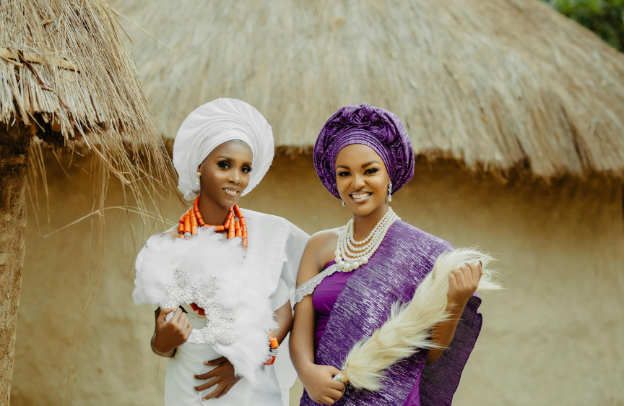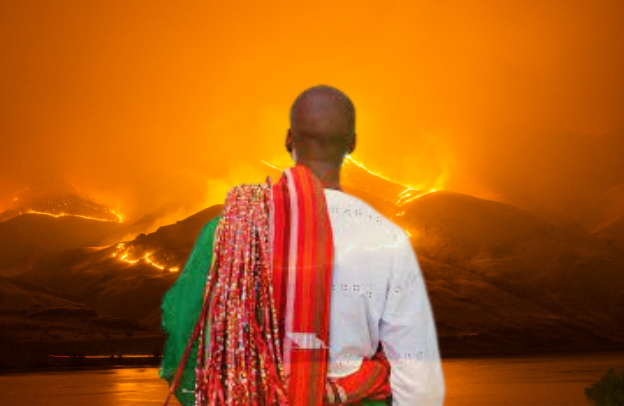Reconnecting With Our Roots: Culture, Heritage and the Dance of the Spirit

If you are reading this from the diaspora, whether in London, New York, Rio, Toronto, or elsewhere, I extend a heartfelt greeting. This is for you, for us. For the African child of the wind, of the waves, the migrant, the descendent, the seeker of connection. What I invite you into now is not simply a story about a dance, but a return to something deeply human: a tradition that carries rhythm, spirit, identity, and memory.
Learn How to Leverage Your Story through our Story To Asset Framework.
The dance I am speaking of is the Igbabonelimhin of the Esan people of Edo State, Nigeria, often rendered “clapping for the spirit”, or more poetically, “when bodies meet the ancestors in motion”.
But this is less about a single person and more about a shared heritage, and how that heritage can speak to you, here and now, across oceans and years.
Why this matters to us in the diaspora
In our lives abroad, so often we carry fragments: language we never heard, names whose meanings are lost, photos of ancestors we never met. And sometimes, we long for something more, something alive, embodied, resonant.
A dance like Igbabonelimhin offers exactly that: a place where body, story, land, spirit, community all intersect.
See also Esan Language: A Journey into the Literary and Cultural Heritage of the Esan people
Think of it as heritage in action: not just in books, libraries, or museums, but in jump, in spin, in mask, in rhythm. It invites you not only to read but to feel, to watch, to imagine, perhaps to create. It reminds you that your literary heritage is also movement, performance, ritual, and memory.
What is this dance?
Let me walk you through what makes Igbabonelimhin unique so that when you hear its name or see its performance, you’re not alien but rooted.
The name: The term combines two Esan words — Igbabo, meaning “to clap”, and Elimhin, meaning “spirit”. Together: “clapping for the spirit” or “commune with the spirit”.
The performance: It is a masquerade dance‐theatre tradition, where performative acrobatics somersaults, aerial flips, rapid spins—are executed by masked participants who embody or represent spirits.
Costume/Identity: The dancers carry hand‐woven multi‐coloured fabrics (known locally as igbuluododo) and masquerade paraphernalia. The mask, the fibre, the bells, they transform the human into “elimhin” (spirit).
Initiation and structure: This isn’t a casual performance. Young men must undergo training stages, Ikhienlen Oto (ground dance), Ogayikeken (somersaulting stage), Iruen-Ebe (initiation rites). A hierarchy of spirits (smaller elimhins, then the senior “Odion-elimhin”) is respected.
Social‐spiritual function: It is performed during festivals, new yam celebrations, burials, significant communal gatherings. It is also used for cleansing, protection, social regulation, rendering it cultural ritual, not mere entertainment.
The heartbeat of heritage: more than movement
When you witness Igbabonelimhin either in video, in your imagination, or (ideally) live you’re witnessing many layered things:
Story & myth: One account describes how a hunter in Esan‐land witnessed gorillas beating sticks and somersaulting in the air and brought this wonder home, and the community adopted it as dance. Mythic, yes—but also deeply metaphorical.
Embodied language: The body, the mask, the drums—they are telling a story. The somersault becomes metaphor for transformation or transcendence; the bells and feet stamping become language; the costumes become character.
A scholar notes: “This cultural male‐oriented dance involves sophisticated acrobatic stunts and tumbling … accompanied by drumming, feet stamping, sticks, bells … to express … emotions such as joy, sorrow, hope, victory, and strength.”
Memory & identity: In the Esan world, Igbabonelimhin serves as a marker of identity. “Today, the dance is taken as a unique symbol for Esans everywhere.”
For you in the diaspora, whether of Esan descent or connected through African heritage, this dance can be a mirror: a way to see yourself in tradition, to locate your line, to feel your roots.
Community & ritual harmony: It binds people—training together, performing together, celebrating together. Communities used the dance to form alliances, to restore harmony, to express collective values.
What does this ask of you?
I want you to hear the invitation: your heritage is not passive. It is alive—and you are allowed to engage actively. Here are some ways you might take that up:
- Watch. Feel. Learn: Find videos (there’s one online if you search “Esan Igbabonelimhin dance our culture and heritage”). Observe how the costumes move, how the body flips, how the drums pulse. Let yourself imagine being there, hearing the crowd, feeling the rhythm.
- Reflect on metaphor and meaning: What does “clapping for the spirit” mean in your life? What are the somersault moments you’ve lived—crossing continents, cultures, identifications? How might a dance of spirit, of ancestors, of movement speak to the rhythms of your own migration story?
- Connect back: If you are of Esan descent—wonder about your lineage. If you are part of the broader African diaspora—ask how your traditions meet this one. Could you share it in your community, your church, your home, your cultural group? Could you talk about it, show parts of it, even adapt creatively (with respect)?
- Preserve & transmit: This dance is under pressure. One recent article highlighted concerns: the acrobatic dance is fading in some places, performed only rarely, and sometimes reduced to a spectacle divorced from its rituals. You, in the diaspora, can be part of the solution: record, archive, transmit stories. Bring it into educational settings: workshops, youth gatherings, diaspora gatherings. Share with pride—not as exotica—but as culture, as lineage, as identity.
- Create: You might be a writer, a dancer, a visual artist, an educator. What if you inserted the pattern, the rhythm, the idea of Igbabonelimhin into your work? Maybe your next poem, your next movement piece, your next community‐event could include reference to “the mask that flies”, “the body that leaps for ancestors”, “the clapping that summons spirit”.
A wider hope: how this becomes our heritage
What Igbabonelimhin teaches us doesn’t stop at Esanland. It offers a lens for understanding African heritage: it says that our literatures are not only written, they’re sung, danced, masked, embodied; that our ancestors speak through our bodies as much as our words; that identity is not static, it moves, flips, lands.
As diasporans, too often we feel uprooted. But traditions like this tell us we are not rootless; our roots are deep, multifarious, and they reach through rhythm, through ritual, through community. By embracing and honouring them we reclaim power and narrative.
When you next meet someone asking, “How do we connect to our heritage in the diaspora?” you can say: “Start by looking at Igbabonelimhin—the leap, the drumming, the mask—and you’ll understand how bodies hold memory, how acrobatics speak of ancestors, how culture is not just what you keep—but what you move with.”
In closing
Dear reader, I leave you with a picture: imagine a dusty village square in Esanland, drums pounding as dusk settles, young men in bright stripes and bells leap into the air, the crowd gasps and claps, the masquerade figures spin, the ancestors smile or so it feels. And now imagine that feeling inside you: the movement, the rhythm, the connection.
You belong to this story. Your heritage is rich. Your story is woven in threads of lands you may never have touched—but which pulse through your marrow. So, shake your shoulders, listen to a drum, imagine a mask, ask questions, record stories—and in your living, your art, your community, carry the leap.
The spirits from Esanland are clapping. The elders are watching. The future needs you.
And I, across continents, stand with you with pride.
Learn How to Leverage Your Story through our Story To Asset Framework.






